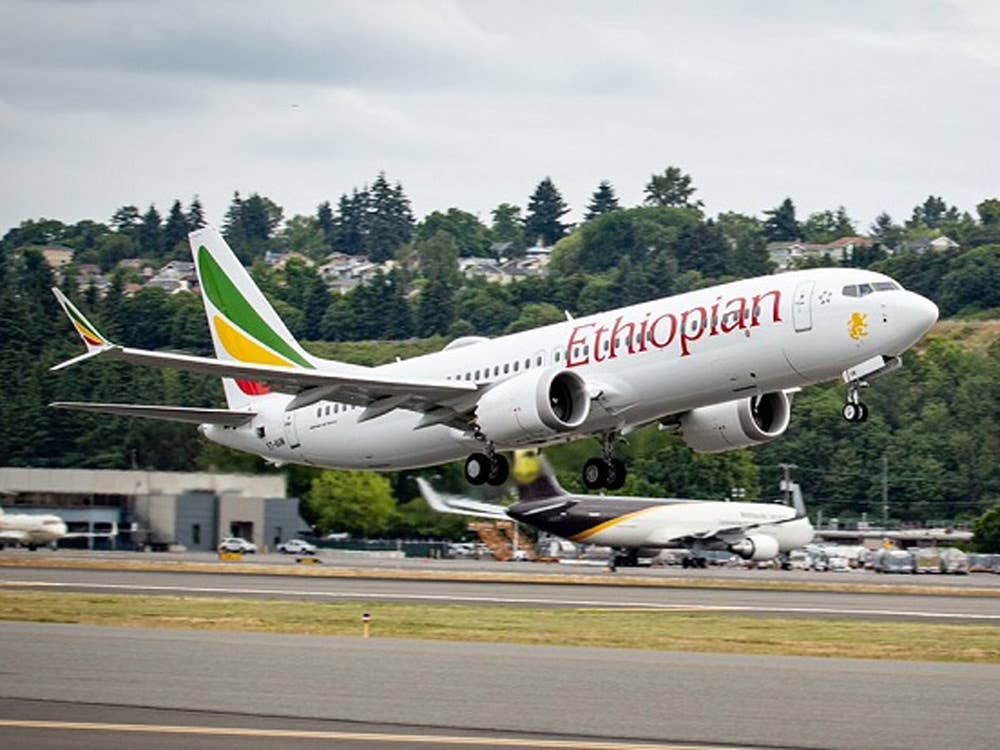
Ethiopian Airlines took delivery of its first Boeing 737 Max 8 last summer. Courtesy Boeing
More than two dozen airlines around the world have grounded their fleets of Boeing 737 Max 8 jetliners after the second deadly crash of the type in less than five months. A number of countries have also banned the airplane from operating in their airspace as crash investigators work to determine what may have caused the nearly brand new Ethiopian Airlines jet to crash minutes after takeoff from Ethiopia's Addis Ababa Airport on Sunday, killing all 157 people on board.
It was an eerie repeat of a similar crash involving a brand new Lion Air 737 Max 8 in Indonesia on October 29, which claimed the lives of 189 passengers and crew. So far there is no indication that the causes of the crashes are related, but the circumstances are similar enough that many of the jetliners are being grounded even as Boeing stands behind the model.
The UK’s Civil Aviation Authority was the latest to ban the jetliner from operating in or over its airspace “as a precautionary measure.” The move follows bans in the past two days of the 737 Max 8 by China, Australia, Indonesia, Malaysia, Singapore and Oman as 25 airlines have also opted to voluntarily ground the airplanes. U.S. airlines that operate the 737 Max 8, including American and Southwest Airlines, say they will continue to operate the model as they monitor developments.
A focus of investigators in the crash of Ethiopian Airlines Flight 302 will almost certainly include the 737 Max 8’s maneuvering characteristics augmentation system (MCAS), an anti-stall protection technology that reportedly issued faulty angle-of-attack readings in the October crash of Lion Air Flight 610. Boeing yesterday announced that it has been working on a flight control software upgrade for the system, partly in response to the Lion Air crash, that includes updates to the MCAS flight control law, pilot displays, operation manuals and crew training. The upgrade is expected to be deployed in the next few weeks and likely will be the subject of an FAA airworthiness directive. For now, the FAA says it lacks sufficient evidence to ground the 737 8 Max.
In the Lion Air crash, the crew experienced an unexpected nose pitch down shortly after takeoff as the aircraft was passing through 5,000 feet. MCAS and angle of attack error messages were discovered by investigators, prompting the FAA in November to issue an emergency airworthiness directive for the 737 Max 8 noting “erroneously high single angle of attack (AOA) sensor input could result in repeated nose-down trim commands of the horizontal stabilizer, which could be from the MCAS.” The remedy for the problem requires the crew to disable the MCAS and apply appropriate pitch trim inputs.
The flight data recorders from the Ethiopian Airlines Boeing 737 have been recovered, but investigators have yet to review the information they contain. What is known about the crash is that the pilots of the jetliner reported difficulties and asked to return to Addis Ababa minutes after takeoff. Radar data shows an unstable flight path as the jetliner appears to have had difficulty climbing shortly after takeoff. The data shows its vertical speed fluctuating from a shallow climb to a sharper climb and then to a dive followed by a sharp climb before the airplane apparently went out of control and crashed.
Another focus of the inquiry into the crash will focus on the pilots' qualifications and training, as well as maintenance practices at the airline. The investigation is being led by Ethiopian authorities in coordination with teams of experts from Boeing and the NTSB, which have arrived on scene in Ethiopia.

Sign-up for newsletters & special offers!
Get the latest FLYING stories & special offers delivered directly to your inbox






